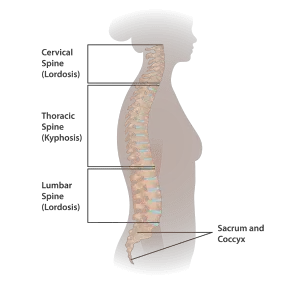Contents
Introduction
Inversion therapy is a type of treatment that involves hanging upside down or at an inverted angle. The aim of inversion therapy is to decompress the spine and relieve back pain. Back pain is one of the most common reasons people visit the doctor or miss work. Inversion therapy may provide some relief for people with back pain.
What is an inversion table?
An inversion table is a device that allows you to strap yourself in upside down and then rotate your body 180 degrees so that you are hanging upside down.
How does an inversion table work?
An inversion table is a device that allows you to suspend yourself upside down. The theory behind using an inversion table is that it can stretch your spine and take pressure off of your discs. This can relieve pain caused by conditions such as sciatica or herniated discs.
The benefits of using an inversion table
An inversion table is a device that allows you to hang upside down, or at an inverted angle. This can provide various health benefits, including:
- Relief from back pain: Inversion therapy can stretch out your spine and relieve pressure on your discs and nerves.
- Improved blood circulation: When you’re upside down, gravity helps pull blood away from your feet and toward your head. This can help reduce the appearance of varicose veins and improve overall circulation.
- Stress relief: Inversion therapy can help take the tension off your muscles and joints, providing a feeling of relaxation.
- Increased flexibility: Stretching your muscles and joints in new ways can increase your flexibility.
If you’re interested in trying inversion therapy, be sure to consult with your doctor first to see if it’s right for you.
The risks of using an inversion table
While inversion therapy can offer some benefits, there are also some risks associated with using an inversion table. Because you are hanging upside down, there is a danger of stroke or heart attack if you have high blood pressure or heart disease. There is also a risk of falling and injuring yourself if you do not use the table properly.
If you are pregnant, have glaucoma, or suffer from osteoporosis, you should not use an inversion table. If you have any other health concerns, be sure to talk to your doctor before using this therapy.
How To Use An Inversion Table
An inversion table is a device that allows you to hang upside down, or at an inverted angle. This position decompresses the spine and can provide relief from back pain. Inversion therapy is also said to improve blood circulation and reduce stress.
If you’re interested in trying inversion therapy, it’s important to know how to use an inversion table properly. Follow these steps and you’ll be hanging upside down in no time:
- Read the instructions that come with your inversion table. Each table is different, so it’s important to familiarize yourself with the specific model you have.
- Adjust the height of the table so that your feet will be able to clear the floor when you’re inverted.
- Lie on the table and secure your ankles into the padded restraints.
- Slowly lower yourself into an inverted position, stopping if you feel any pain. If you’re new to inversion therapy, start with short sessions (no more than two minutes at a time) and gradually increase the duration as your body adjusts to the position.
- To return to an upright position, simply pull yourself up using the handles on either side of the table.
Other Back Pain Relief Options
There are many other options for back pain relief besides inversion tables. Some people find relief through chiropractic care, massage therapy, or acupuncture. Others find that physical therapy, yoga, or Tai Chi help to relieve their back pain. There are also many over-the-counter and prescription medications that can help to relieve back pain.
If you suffer from back pain, it is important to talk to your doctor about all of your treatment options. In some cases, surgery may be necessary to correct the underlying problem. However, there are many effective nonsurgical treatments that can provide relief.
Who should use an inversion table?
 There are many benefits of using an inversion table, but it’s important to understand who should and shouldn’t use one.
There are many benefits of using an inversion table, but it’s important to understand who should and shouldn’t use one.
Inversion therapy can be beneficial for people who suffer from back pain, sciatica, or other conditions that cause nerve pain. It can also help to relieve tension headaches and reduce stress levels.
If you have high blood pressure, heart disease, or glaucoma, you should not use an inversion table without first consulting with your doctor. And if you are pregnant, you should not use an inversion table at all.
If you have any concerns about whether or not using an inversion table is right for you, please consult with your doctor before using one.
Who should not use an inversion table?
People with conditions such as high blood pressure, glaucoma, heart disease, or a herniated disc should not use inversion tables without consulting a doctor first. Also, pregnant women and anyone under 18 years old should not use them. If you have any other medical conditions like neck pain or are taking any medications, check with your doctor before using an inversion table.
Frequently Asked Questions
Can an inversion table hurt your back more?
An inversion table can hurt your back more if you do not use it correctly. Make sure to consult with your doctor before using an inversion table, and follow the instructions carefully to avoid injury.
How long should you sit on an inversion table?
Typically, people use inversion therapy for two to three minutes per session.
Can an inversion table help bulging discs?
There is no definitive answer, as each case of bulging disc is unique. Some people may find relief from using an inversion table, while others may not.
inversion tables, inversion table, inversion therapy, inversion table therapy, back pain, gravitational force, medical professional, spinal traction, heart rate, health benefits, back pain relief, blood pressure, drug administration, key points, necessary precaution, spinal disks, following health issues, sciatic nerve pain, muscle, spasms, spinal curvature, stenosis, degenerative disc, degenerative joint disease, medical devices, chiropractors.do inversion tables, inversion treatment, pain, this method, negative side effects, upside down, modern medicine, extended period, chiropractic, sciatica, chiropractors, spinal stenosis, lower back pain, lower back, laminectomy, rheumatoid, herniations, osteoarthritis, rehabilitation, muscle spasms, diastolic, arthritis, backbone, neuropathy, degenerative disc disease, chiropractic medicine, back pain, blood pressure, increased blood pressure, physical therapy, spinal
Conclusion
Yes, inversion tables are good for you as long as you use them properly. Inversion therapy can help relieve back pain, improve your posture, and increase your flexibility. However, it’s important to consult with your doctor before using an inversion table, as the therapy may not be appropriate for everyone.

Dave Lee is the founder of Spine Institute NY, a huge fan of inversion therapy, a researcher, and an author.

